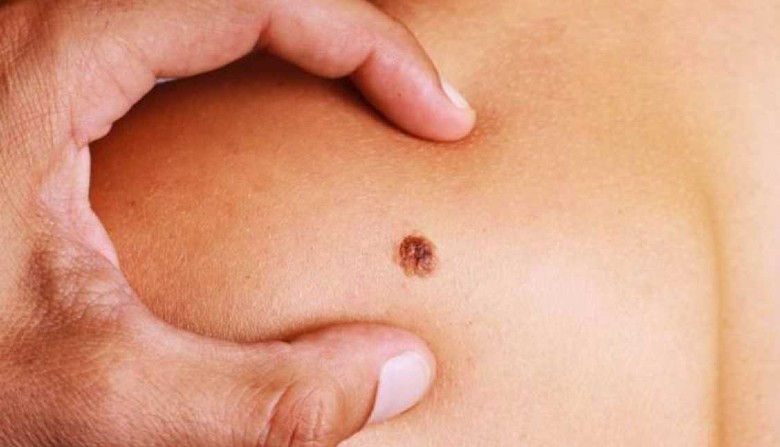The Ministry of Public Health issued a statement for World Skin Cancer Day, a day that was commemorated yesterday, Monday the 13th. The Secretary of State pointed out that this cancer is the most frequent worldwide and in our country. June 13 was established as “World Skin Cancer Day” to raise awareness and inform about this type of tumor.
The portfolio explained in the document that “There are three main types of skin cancer, squamous cell and basal cell cancer are the most frequent. These are also called non-melanoma skin cancer; in most cases they are detected in early stages and are cured only by surgical intervention in which the affected tissue is removed”.
figures and statistics
The third type of skin cancer called “melanoma” is the most aggressive. It has the ability to spread and metastasize to other parts of the body. If it can be detected in early stages of development, it can also be cured.
In our country they are diagnosed in both sexes, an annual average of approx. 3,200 new cases, the most frequent being basal cell carcinomas, followed by squamous cell carcinomas (between the two they reach figures of approximately 2,900) and melanoma appears in third place with 170 new cases per year (National Cancer Registry 2014-2018).
In terms of mortality, an annual average of 145 people die -approximately- (both sexes), with melanoma being the cause of the most deaths with an annual average of 90 people dying (National Cancer Registry 2014-2018). Based on the average of those numbers, almost three (3) people die each week from skin cancer.
The signs
In the document published by the Ministry of Public Health, one of the most frequently asked questions is asked: What should you be aware of? “A skin change is the most common sign. These changes can be a new lesion that has appeared on the skin, a sore that does not heal, or a change in a mole. Not all skin cancers look the same,” explains the portfolio.
Although skin cancer can occur anywhere on the body, it is more common in areas most exposed to sunlight such as the face, neck, hands and arms, since sun exposure is one of the main factors. risky. The lighter skin type (phototype), the immune nature of the person and genetic factors are also determining elements for the risk of developing melanoma.
In the case of melanoma, the ABCDE rule must be taken into account:
Asymmetry, is my mole asymmetrical?, (unusual non-uniform shape), Border, does it have irregular borders? (changeable, poorly defined borders), Color is it multi-colored? Diameter is it more than 6mm? and Evolution, did its appearance change over time? do you find it weird? Does it itch, bleed, does it not heal or does it have a scab?
Prevention methods
Among the recommendations that people have to keep in mind is the study of moles and spots. In addition, it is suggested to check the skin, in order to detect any place that is suspicious. In addition, the MSP points out that “it is important to examine the entire skin: do not forget the palms, soles, ears and scalp.” The main risk factor for skin cancer is exposure to ultraviolet radiation (UV rays) from from the sun, without protection or care and from other sources, such as tanning beds.
You must protect yourself against sun damage by UV rays: “this damage is cumulative. The skin has memory. There is no such thing as a safe tan, as tanning is skin damage caused by the sun.”
When exposing yourself to the sun, throughout the year and with greater care in summer, there are some points that must be taken into account:
– Enjoy in the shade, avoiding direct sun between 10 am and 4 pm (since we receive more radiation at that time).
– Protect yourself with a hat or cap; dark colored clothing such as black, blue and red (which reject UV rays) preferably long-sleeved and sunglasses with a certified UV filter.
– Put on sunscreen with a factor of 30 SPF or higher, use it on dry skin 30 minutes before exposing yourself to the sun.
– The protective layer should be replaced every 2-3 hours, when leaving the water, after outdoor sports or sweating.
– Make sure that children under one year of age are not directly exposed to the sun.
– Take care on cloudy and windy days. UV radiation passes through clouds and water, and affects us throughout the year.
– Avoid tanning beds. Self-tanners are allowed.
– Carrying out clinical controls with dermatologists who examine the skin is also an essential pillar in the prevention of skin cancer.
If we find it early, at an early stage, skin cancer can be operated on and can be cured.
If you find a new lesion on the skin or an existing one changes in size, shape, color or volume, it is important to consult a dermatology specialist.
If you have many moles, family or personal history of skin cancer, consult your dermatologist periodically.
Although lighter-skinned people – who turn red when exposed to the sun – have a higher risk of skin cancer, anyone can develop it.


















